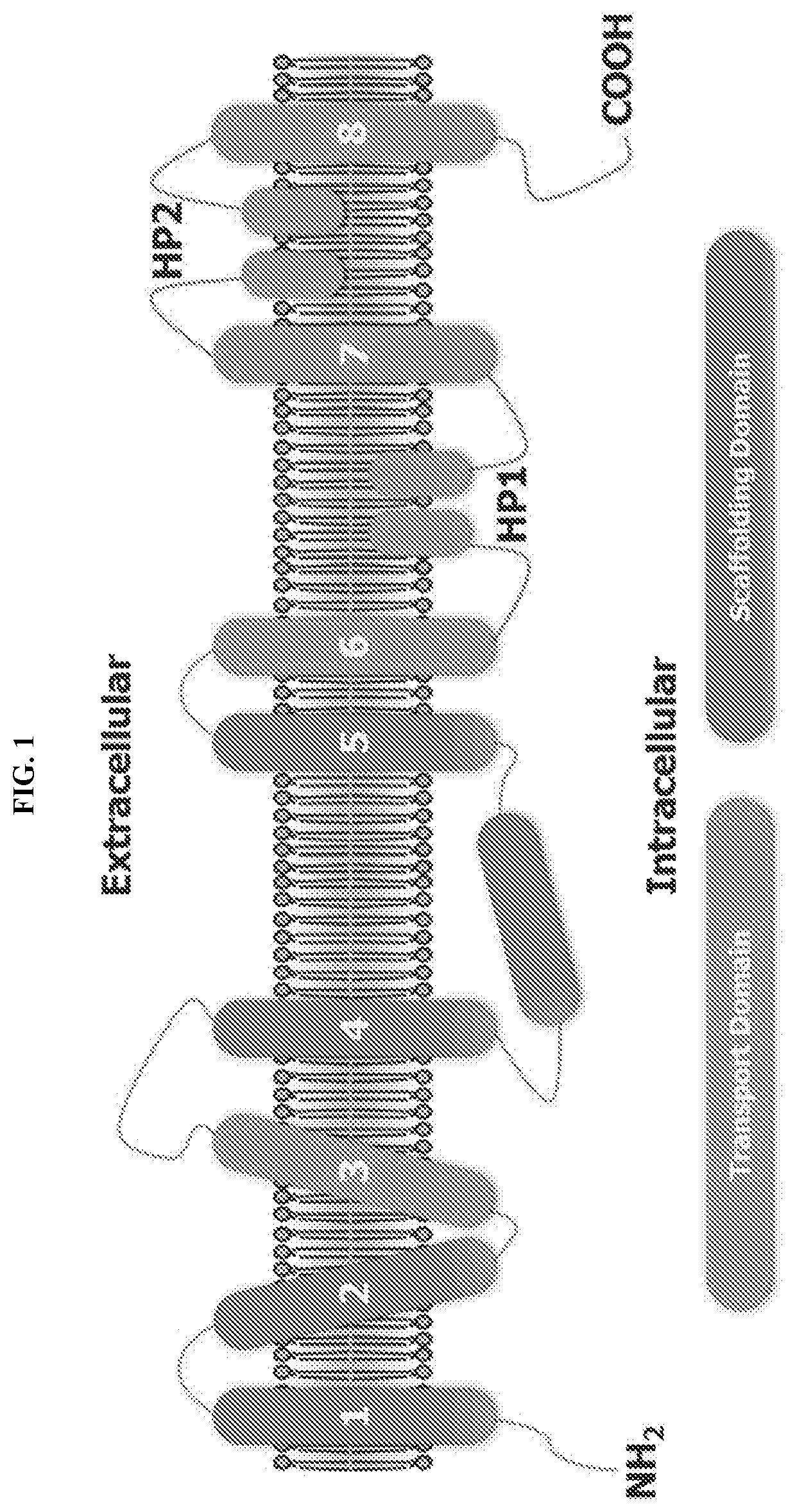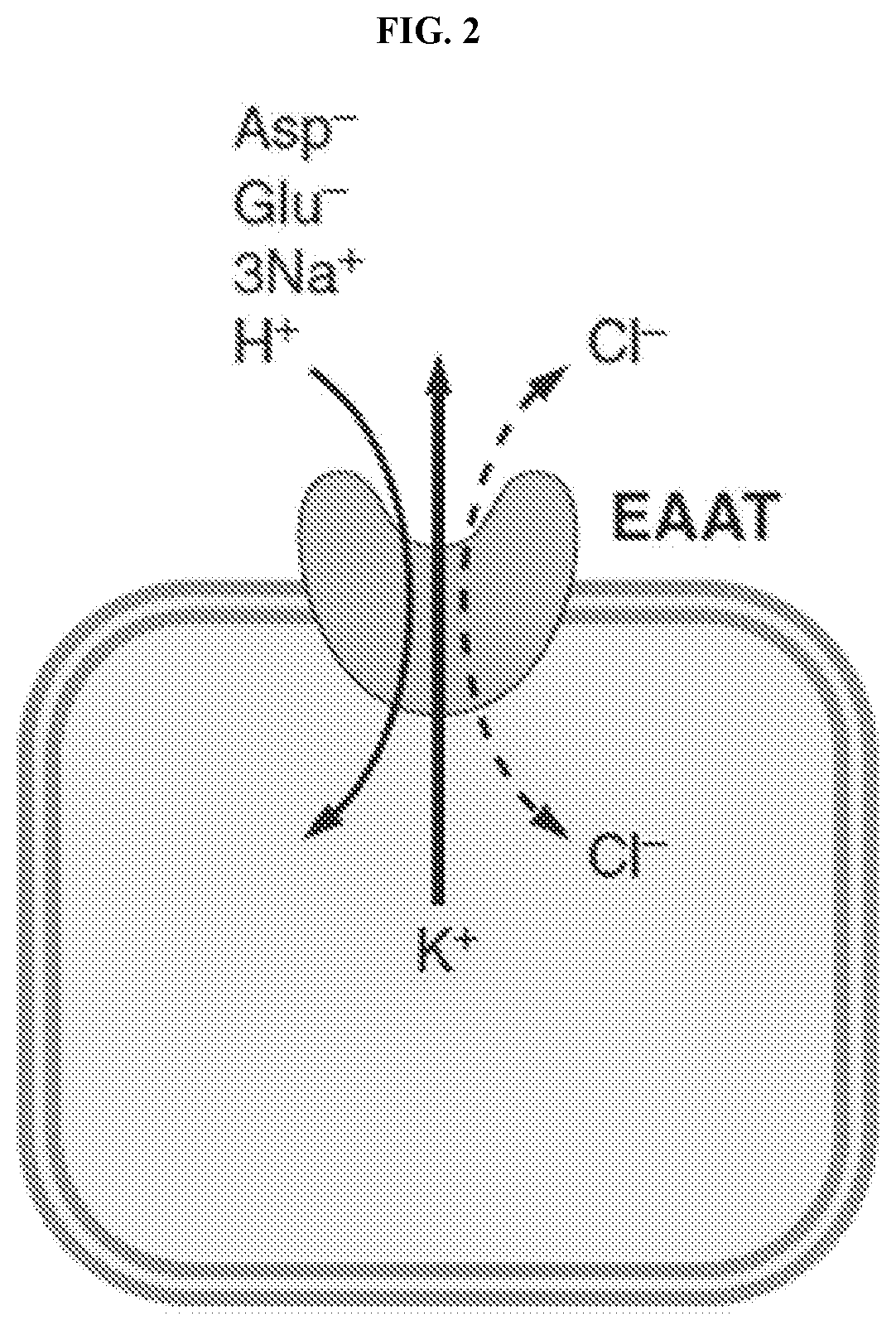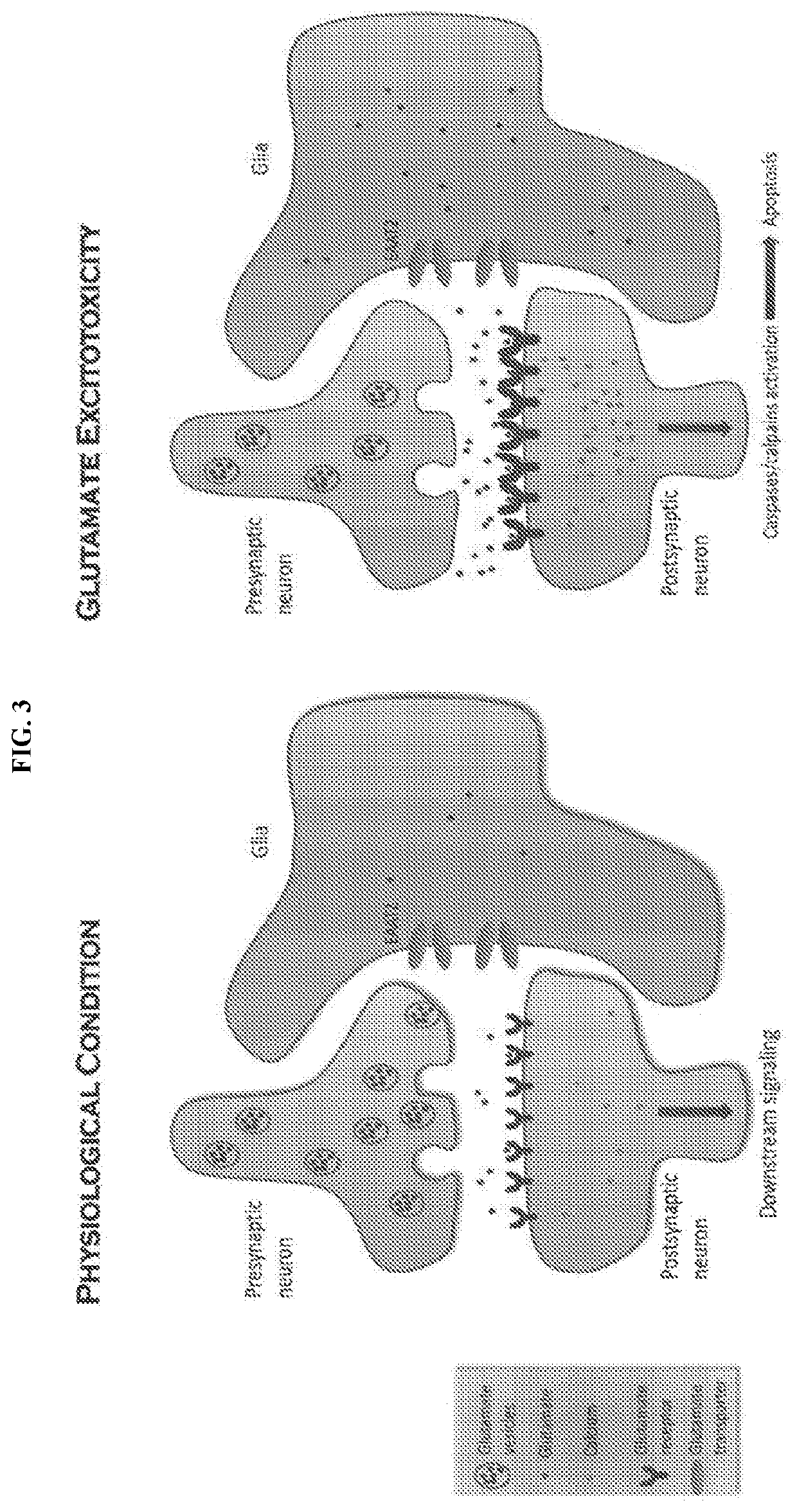Glutamate transporter activators and methods using same
a technology of glutamate transporter and activator, which is applied in the direction of nervous disorder, organic chemistry, drug composition, etc., can solve the problems of increased seizures, increased susceptibility to damage due to ischemia, and increased acute and sustained glutamate concentrations
- Summary
- Abstract
- Description
- Claims
- Application Information
AI Technical Summary
Problems solved by technology
Method used
Image
Examples
example 1
[0302]The present disclosure relates to the identification and characterization of novel compounds that bind to the EAAT2 activation domain, using HSB virtual screening. Traditional high-throughput screens have been unsuccessful in identifying compounds that directly increase the activity of EAAT2. The HSB method used herein allows for the identification of small molecule modulators to several drug targets. As demonstrated herein, structural and computational methods can be used to screen compound libraries to identify compounds that bind to the venom binding site and display favorable activity.
[0303]In one aspect, the interaction of compounds with the activation domain was explored by performing structure / function studies with the venom and novel compounds on mutants within the activation domain. These include the mutants highlighted in FIG. 6A: V75, D83 [TM2], L290, L295, G298 [TM5], and W472 [TM8], and also additional mutants that structural modeling has identified as located wit...
example 2
Screening Identified Novel EAAT2 Allosteric Modulators
[0305]Molecular dynamics simulations of the modeled EAAT2 in a 1-palmitoyl-2-oleoyl-sn-glycero-3-phosphocholine (POPC) membrane indicated presence of an allosteric pocket in a located at a structural interface between the transport and surrounding trimerization domains (FIG. 19A). Such region is important for facilitating conformational changes during the translocation cycle. This region is distal from the central substrate binding region formed by Hairpins 1 and 2, suggesting that compounds interacting at this site have an allosteric mode of action.
[0306]From the molecular dynamics simulation, five residues, namely, M86, L295, K299, W472, and D485, that lined the allosteric pocket were identified. Using these five residues, a five-point three-dimensional “receptor pharmacophore” (FIG. 19B) was designed for virtual screening of assembled libraries.
[0307]The virtual screening approach identified 10 molecules that were evaluated in...
example 3
of the Invention Stimulate EAAT2-Mediated Glutamate Transport with High Potency and Selectivity for EAAT2 and No Effects on EAAT1 or EAAT3
[0310]Potent hit compounds GT949 and GT951 were evaluated in a dose-response assays on glutamate uptake in COS-7 cells transfected with EAAT1, 2, or 3. In this assay, T949 and GT951 enhanced glutamate transport with EC50 values of 0.26±0.03 and 0.8±0.3 nM, respectively (FIGS. 8A-8B). The increase in rate acceleration for glutamate removal by EAAT2 was ˜70% for both compounds, which is comparable to Parawixin-1 (70%). GT949 and GT951 also demonstrated selectivity to EAAT2 and had no effect on glutamate activity mediated by EAAT1 or EAAT3 (FIGS. 8A-8B).
PUM
| Property | Measurement | Unit |
|---|---|---|
| time | aaaaa | aaaaa |
| time | aaaaa | aaaaa |
| time | aaaaa | aaaaa |
Abstract
Description
Claims
Application Information
 Login to View More
Login to View More - R&D
- Intellectual Property
- Life Sciences
- Materials
- Tech Scout
- Unparalleled Data Quality
- Higher Quality Content
- 60% Fewer Hallucinations
Browse by: Latest US Patents, China's latest patents, Technical Efficacy Thesaurus, Application Domain, Technology Topic, Popular Technical Reports.
© 2025 PatSnap. All rights reserved.Legal|Privacy policy|Modern Slavery Act Transparency Statement|Sitemap|About US| Contact US: help@patsnap.com



